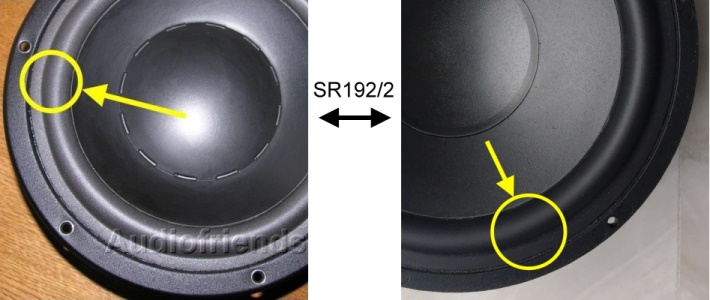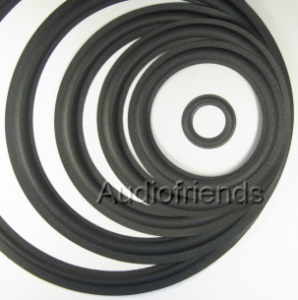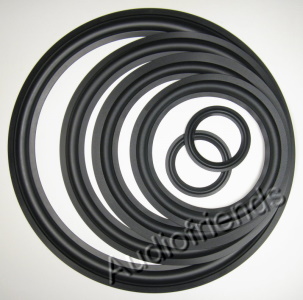Foam or rubber surrounds?
The whole story, practical and technical: For instance for B&O we have also manufactured a rubber surround next to a foam surround (=edge) version (3 inch midrange). The moving mass of this rubber surround is very thin and light, and listening research has shown no difference. With woofers it is often a bit more precise.
There are brands and types such as Tannoy, Dynaudio, Vifa, etc. where the production is exactly manufactured with the same loudspeaker parts but where the foam surround is replaced by a rubber surround. Given the fame of the aforementioned brands, a foam surround can indeed be replaced by a rubber surround.
For example, with the Dynaudio type surround SR192/2 where in later versions exactly the same parts are used, but the foam edge is replaced by a SR192/2 rubber edge with exactly the same properties. If a foam edge is replaced by a rubber edge, the moving mass must be light, thin and often also flexible. Especially with hi-fi speakers. The surrounds made by Audiofriends, the 4"AF-BS for the Bose 901 and the 3"AF-69 for the B&O Penta are also based on this principle.

For speakers in cars, a rubber edge can be a solution. Warm, sunlight, smoke etc. are often seen as bad for foam surrounds.

For speakers in cars, a rubber edge can be a solution. Warm, sunlight, smoke etc. are often seen as bad for foam surrounds.
---
The more technical story:
We have rubber surrounds, but they are less in demand compared to foam surrounds. A foam surround is an essential part of the speaker unit and it could sound different with a rubber surround instead of a foam surround. The advantage of rubber is that it does not decompose. This is partially true; however, rubber may dry out and/or harden.
The foam surrounds we offer are made of top-quality and are durable. The following text is a direct quote from the Dutch edition of the book ‘The Loudspeaker Design Cookbook‘ by Vance Dickason. This is not just any book, but a Bible among books used by designers of loudspeakers:
"The type of material the surround is made of and its thickness can dramatically affect the reproduction characteristics of a loudspeaker chassis."
"The surround can dampen diaphragm vibrations and counteract reflections to the center of the diaphragm, affecting both the amplitude and phase of the resonance modes."
"For these reasons, the surround is an integral part of the diaphragm construction and also a component that is largely responsible for the development of the frequency response."
Furthermore, when the speaker is designed, the mechanical mass MD is also determined by the weight of the surround. Rubber surrounds are a lot heavier than foam surrounds. In the calculation, the MD includes half the weight of the surround. For example, by another MD, the Fs = resonant frequency and other parameters also change, so that the original design can be lost.


© Copyright 2012 - 2023 – Audiofriends – Fred Buist – All Right Reserved


 Nederlands
Nederlands
 Deutsch
Deutsch